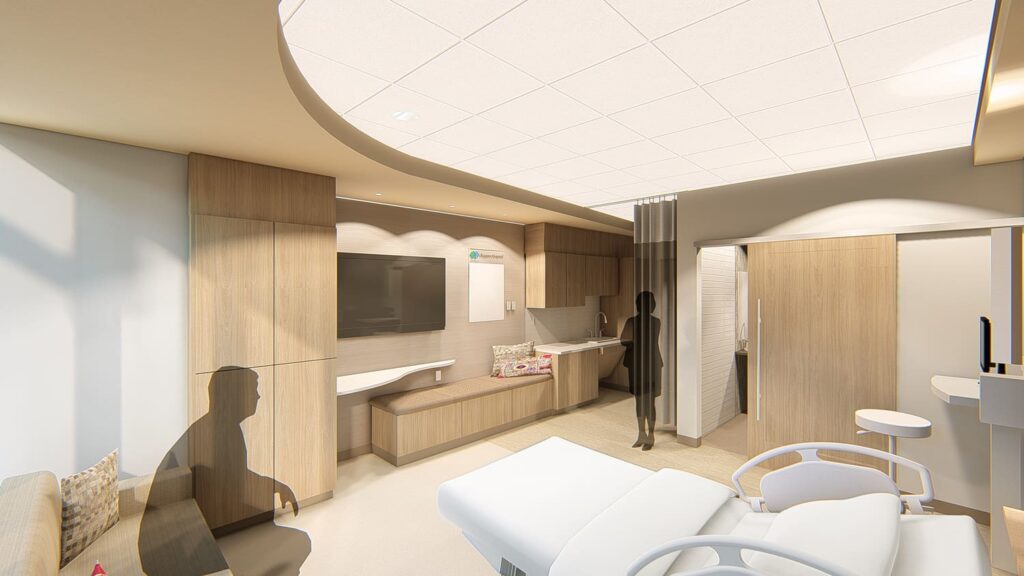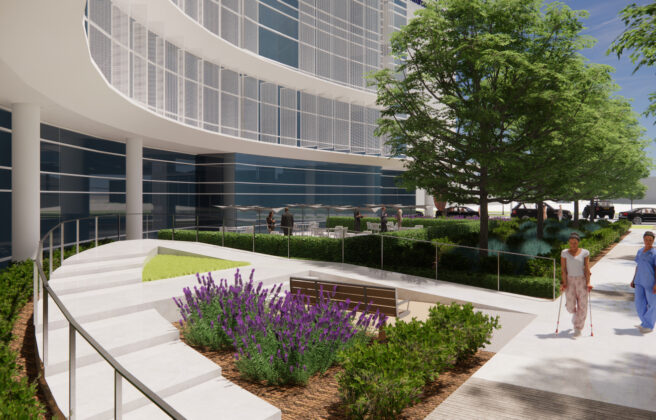Women have choices when it comes to their childbirth experience – they are dictating where to receive service and how. Where to deliver is often the number one question on their minds. Choices have created competition amongst hospitals and birth centers. The demographic shifts of age and race that are affecting our culture are now forcing hospitals to look at how they serve women in their child-bearing years. Units designed decades ago are not relevant anymore for a population that values experience as much as expertise.
As Regions Hospital saw the landscape shift, they seized the opportunity to create a birthing center that was more than state of the art; it also speaks to the heart – a place where all feel welcome, feel they have choice, and feel they have the resources of a top tier hospital for their birthing experience. The prime child-bearing demographic right now is defined by age, but it is also defined by its diversity of race. Addressing these preferences, spaces need to be both amenity-driven and culturally neutral. From color to technology, the seamless flow of the space can speak volumes to a varied audience that brings their own personal expectations and norms into the care setting.
Research has demonstrated that color can improve memory, provide positive first impressions, and help the overall feeling of a space. Interestingly, blue is the most popular color preference across all races. The second most popular color varies quite a bit. Blacks and Hispanics lean proportionately more toward purple. Asians tend to like pink, and Whites lean toward green.
Click here to read a pdf of the study.
Color can then be broken down further by age groups. According to Sherwin Williams, 41% of Millennials chose black as their favorite color. Gen X goes for greens, violets and reds while Generation Z leans towards bright neon and tropical hues.
At Regions, an effort was made to be as neutral as possible so that priority was not given to one group over another. Minimal color, patterns, and graphics were incorporated into the design, other than strategically being used as a wayfinding tool. For example, different wings of the hospital are different colors so that when a woman is in labor and walking the corridors, she can gauge where she is at and how much farther she must travel to get back to her room. This color scheme also serves for patient family members looking for the correct room. We also received feedback that women in labor prefer soothing patterns and graphics, therefore we opted for more texture in materials versus overuse of color and big graphic patterns.
Access to technology is important and should be incorporated not only into the built environment, but into the furniture as well. Just as people who are waiting to board an airplane desire use of charging stations and WIFI connections, those waiting in a hospital (or anywhere else for that matter) want the same conveniences. Sitting in a waiting room is wasted time for today’s population, so those spaces should be designed to allow for multiple functions like checking e-mails or working remotely.
The key is to eliminate waiting from waiting rooms and find ways to add value to their time. Millennial patients desire access to E-kiosks, online patient portals, social media, video conferencing, etc. Not to mention, Generation Z and Generation Alpha are growing up in a world where voice activation is the norm. “Alexa turn on the TV” is only just the beginning.
Millennials are 25 percent of the population in the US and they seek an overall enhanced experience and want to be engaged. Instead of separating activities, millennials like to see spaces used in multiple ways. Patient rooms should be designed to integrate family into the healing process. Think in terms of accommodating dining space, a workplace, and sleeping space for family. They prefer a clean, simple aesthetic and are looking for a hospitality feel when it comes to their preference in birthing locations.
When it comes to making a choice on where to deliver, women are researching their options and selecting the best of the best. They want a place that feels right, and the physical environment is just as important as the care being received. This mentality is making its way into other healthcare sectors as well. By being in tune with demographic diversity birth centers are essentially the Jones’ and everyone else better keep up.








